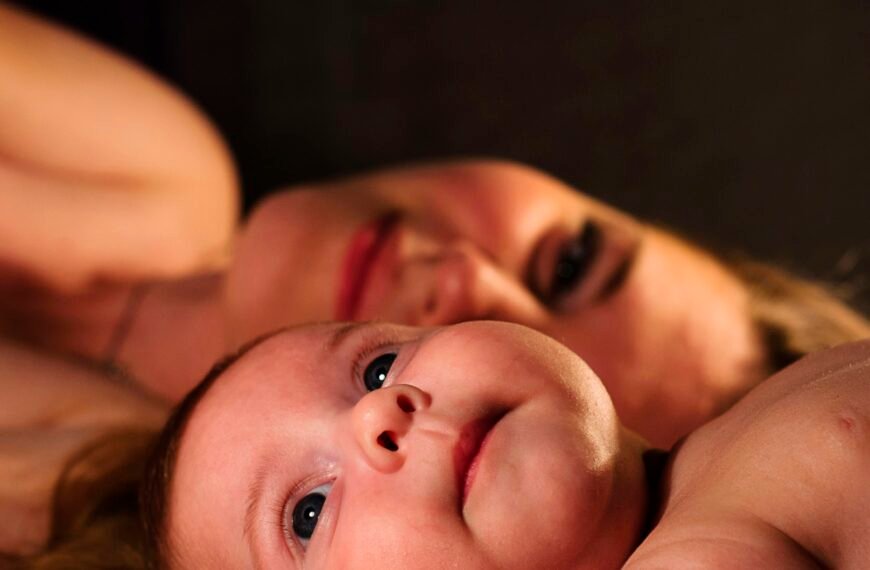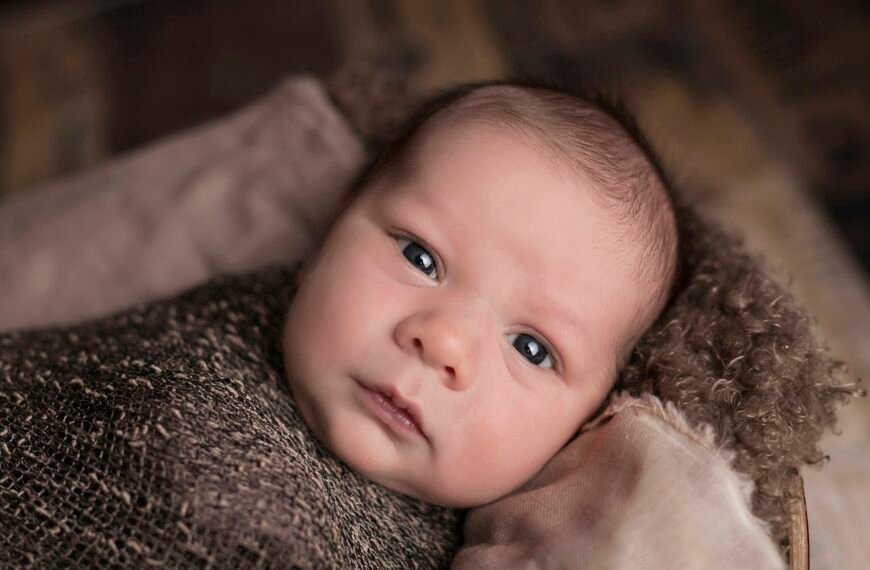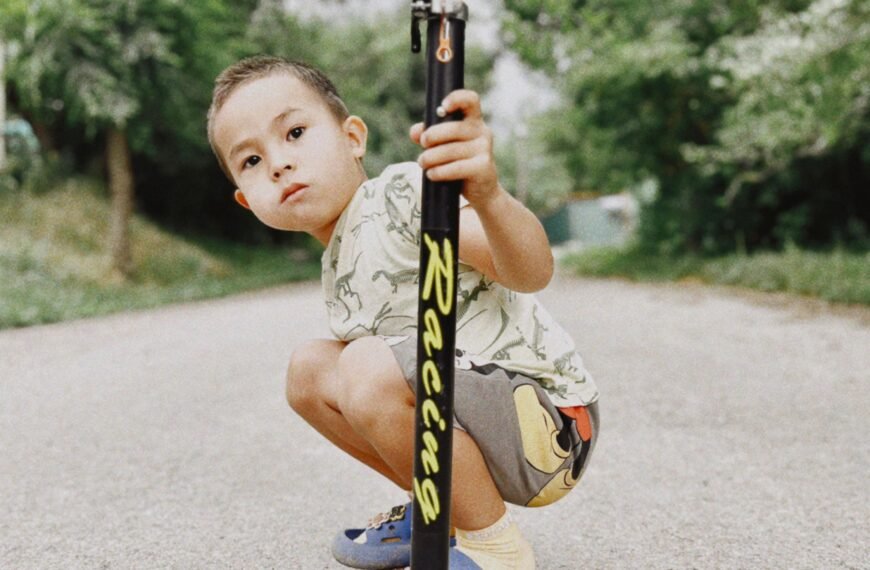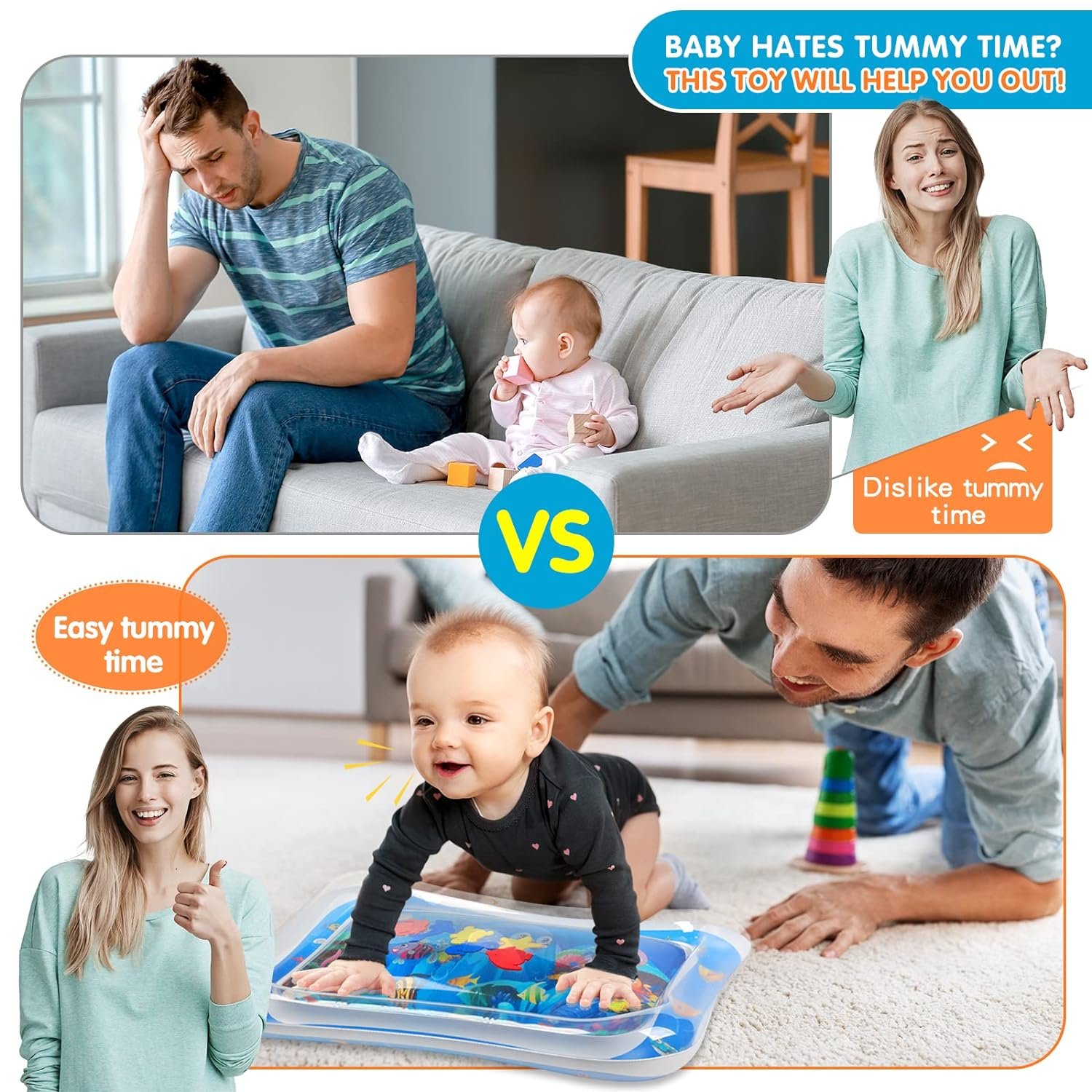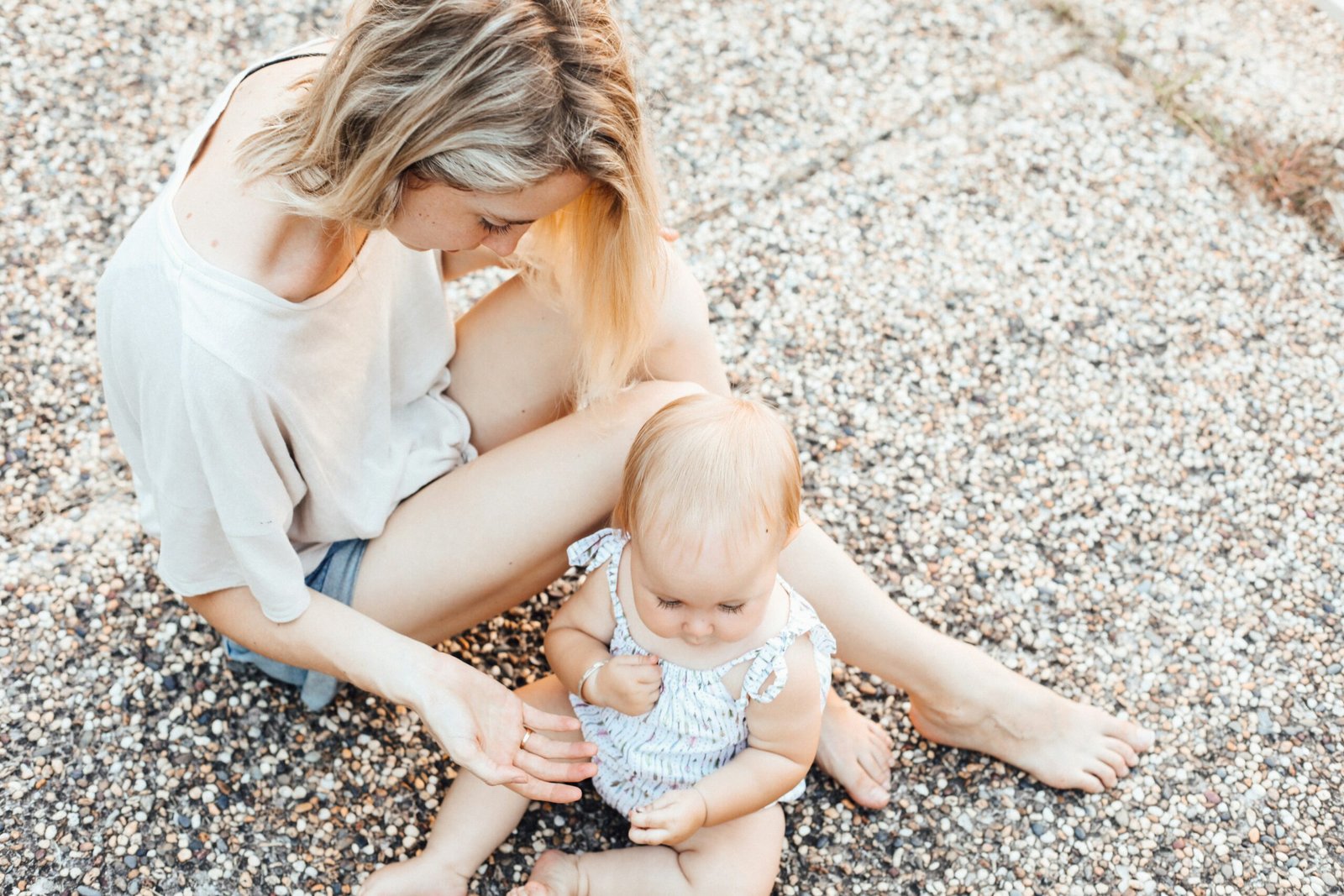If you’re a parent or caretaker, you know that baby toys have a sneaky way of multiplying and cluttering up your space. But fear not, because we’ve got you covered. In this article, we’ll explore some practical and creative tips on how to store baby toys efficiently, keeping your home organized and your little one entertained. Let’s dive into the world of smart toy storage solutions and reclaim your living space without sacrificing playtime!
Check Baby Toys Guide & Review
Organizing Baby Toys
Sorting Toys by Type
When it comes to organizing baby toys, one of the first steps is to sort them by type. Gather all the toys together and group them based on their category. For example, you can create separate piles for stuffed animals, plastic toys, wooden toys, and so on. This sorting method will make it easier for you to find specific toys and keep them organized in the future.
Labeling Toy Containers
To further enhance organization, consider labeling the toy containers. Use clear labels or adhesive tags to identify the contents of each container. This way, you and your little one can easily locate the toys they want to play with. It also makes clean-up time more efficient, as everyone can quickly identify where each toy belongs.
Using Clear Storage Bins
Invest in clear storage bins to store your baby’s toys. Clear bins allow you to see the contents inside without having to open every lid. This eliminates the hassle of rummaging through multiple boxes to find a specific toy. Additionally, clear storage bins are stackable, saving you space and providing a neat and organized look to your toy storage area.
Creating Toy Zones
To keep your baby’s toys organized and easily accessible, consider creating toy zones. Dedicate specific areas or sections to different types of toys. For example, designate a corner for stuffed animals, another for building blocks, and another for toy cars. This not only helps in maintaining organization but also promotes independent play as your little one can navigate through their designated toy zones.
Utilizing Hanging Storage
Maximize your storage space by utilizing hanging storage solutions for baby toys. Hangable fabric organizers with multiple compartments are great for storing smaller toys like action figures or dolls. Alternatively, you can install hooks on the walls to hang toy bags or baskets, creating a visually appealing display while keeping the toys easily reachable for your child.
Considering Open Shelving
Open shelving is a popular choice for storing baby toys, as it provides a convenient and visually appealing organization solution. With open shelves, you can easily see and access toys, making it ideal for larger toys or toys with intricate designs. Consider arranging the toys on the shelves in an aesthetically pleasing manner, such as grouping similar toys together or organizing them by color.
Using Toy Hammocks
If you’re looking for a creative and space-saving way to store stuffed animals or soft toys, consider using toy hammocks. These hammocks can be easily attached to walls or corners of the room, providing a fun and decorative storage solution. Your child will love seeing their plush friends “hanging out” in the hammocks, and you’ll have more floor space freed up for other items.
Investing in Toy Storage Furniture
Another option to consider when organizing baby toys is investing in toy storage furniture. Look for furniture pieces that double as storage, such as toy chests, ottomans with hidden compartments, or bookshelves with built-in toy bins. These multifunctional pieces not only provide ample storage space but also add a stylish touch to the room’s decor.
Creating a Toy Library
To prevent toy overload and keep things fresh and exciting for your little one, consider creating a toy library. Select a portion of the toys and rotate them regularly. Store the toys not currently in use in a separate area or storage container. This way, your child can enjoy a “new” set of toys each time they rotate, and it helps prevent clutter and overwhelm.
Rotating Toy Collections
Building on the concept of a toy library, regularly rotate your baby’s toy collections. Depending on your preference, you can rotate toys on a weekly or monthly basis. This not only maintains a sense of novelty and excitement for your child but also prevents toy overload and keeps your home tidy. When rotating, consider storing the unused toys in clearly labeled containers, ensuring easy access for future rotations.
Cleaning Baby Toys
Choosing the Right Cleaning Method
When it comes to cleaning baby toys, it’s important to choose the appropriate cleaning method based on the materials they are made of. Some toys may be safe for machine washing, while others require gentle handwashing. Always check the manufacturer’s instructions and recommendations before cleaning any toys.
Washing Plastic Toys
Plastic toys can easily accumulate dirt, grime, and germs. To clean plastic toys, start by removing any detachable parts and washing them separately. Then, fill a sink or bucket with warm water and a mild detergent. Use a sponge or cloth to wipe down the toys, making sure to clean all the nooks and crannies. Rinse the toys thoroughly and allow them to air dry before returning them to the toy storage area.
Cleaning Soft Toys
Soft toys, such as stuffed animals or plush toys, can also collect dust and germs over time. Most soft toys can be safely cleaned in a washing machine. Before washing, check the care instructions on the label of the toy. If machine washing is not recommended, spot clean the toy using a cloth dampened with a mild detergent and warm water. Allow the toy to air dry completely before returning it to your child’s play area.
Sanitizing Bath Toys
Bath toys are constantly exposed to water, which can lead to mold and mildew growth if not properly cleaned and dried. To sanitize bath toys, start by squeezing out any excess water or moisture. Mix equal parts of distilled white vinegar and warm water in a bowl or bucket. Submerge the bath toys in the vinegar solution and let them soak for about 15 minutes. Rinse the toys thoroughly with clean water and allow them to air dry completely before using them again.
Disinfecting Toys
To keep your baby’s toys germ-free, it’s essential to regularly disinfect them. There are several methods to disinfect toys, depending on the materials. For plastic toys, you can wipe them down with disinfectant wipes or use a solution of equal parts water and bleach. For soft toys, consider using a fabric-safe disinfectant spray or washing them with hot water. Always follow the instructions on the disinfectant product and ensure the toys are completely dry before returning them to the toy storage area.
Treating Stuffed Animals
Stuffed animals can sometimes get stained or develop unpleasant odors. To treat stains on stuffed animals, start by gently blotting the stained area with a cloth dampened with mild detergent and warm water. Avoid saturating the toy. If the stain persists, you can use a fabric stain remover specifically formulated for stuffed animals. For odors, sprinkle baking soda over the toy and let it sit for a few hours before brushing or vacuuming off the baking soda.
Cleaning Wooden Toys
Wooden toys require special care to prevent damage. To clean wooden toys, wipe them down with a damp cloth, avoiding excessive moisture. For stubborn stains, use a mixture of mild dish soap and water. Gently scrub the toy with the soapy solution and rinse it thoroughly. Ensure the toy is completely dry before storing it to prevent warping or mold growth.
Drying Toys Properly
Proper drying is essential to prevent the growth of mold or bacteria on baby toys. After cleaning or sanitizing toys, allow them to air dry completely before returning them to storage. Ensure that all parts, crevices, and fabric materials are thoroughly dry to prevent moisture buildup. You can place the toys on a drying rack, towel, or even use a hairdryer on a low setting to speed up the drying process.
Cleaning Battery-Operated Toys
Battery-operated toys require extra care during the cleaning process. Always remove the batteries before cleaning any battery-operated toy. Use a cloth or sponge dampened with warm soapy water to wipe down the toy, ensuring that you don’t get any moisture inside the battery compartment. Dry the toy thoroughly before reinserting the batteries and storing it safely.
Removing Stains or Odors
If your baby’s toys have stubborn stains or unpleasant odors, there are a few methods you can try to remove them. For stains, you can create a paste by mixing equal parts baking soda and water. Apply the paste to the stain and gently rub it in before rinsing with clean water. For odors, you can place the toys in a sealed bag with baking soda overnight. The baking soda will absorb any odors, leaving the toys smelling fresh.

Storing Small Toys
Using Ziplock Bags or Small Containers
For small toys such as LEGO pieces, puzzle blocks, or small figurines, opt for using ziplock bags or small containers for storage. Ziplock bags are convenient and transparent, allowing you to easily see the contents and keep them organized. Small plastic containers with dividers are also ideal for keeping small toys separate and preventing them from getting mixed up.
Utilizing Drawer Dividers
If you have a drawer available, consider using drawer dividers to store small toys. These dividers can create separate sections within the drawer, allowing you to organize different types of small toys. You can find adjustable drawer dividers in various sizes and designs to suit your needs. This storage solution keeps small toys neatly contained and easily accessible.
Using Egg Cartons
Recycle empty egg cartons for storing small toys. Egg cartons have individual compartments that can hold small items like mini cars, small bouncy balls, or hair accessories. Simply place the items in the compartments and stack the egg cartons in a drawer or on a shelf. This unique storage solution keeps small toys organized while repurposing a common household item.
Using Pill Organizers
Pill organizers are not just for medication. These handy containers with multiple compartments can be repurposed to store small toys. Each compartment can hold different types of small toys, such as beads, buttons, or action figures. You can find pill organizers in various sizes, making it easy to customize the storage based on the quantity and size of the toys.
Repurposing Ice Cube Trays
Ice cube trays are another versatile storage solution for small toys. The individual sections of an ice cube tray are perfect for holding small items like beads, erasers, or small building blocks. You can stack multiple ice cube trays in a drawer or place them in a larger container to keep the toys organized and prevent them from rolling around.
Opting for Small Baskets or Boxes
Small baskets or boxes can be a practical and visually appealing option for storing small toys. Choose baskets or boxes with different sizes and styles to match your preference and the room’s decor. Label each basket or box based on the toy category it holds, making it easy for you and your child to find and store the toys properly.
Using Magnetic Strips
For small magnetic toys like alphabet letters or magnetic puzzles, consider using magnetic strips for storage. Attach adhesive magnetic strips to a wall or the side of a cabinet, and simply stick the magnetic toys to the strips. This storage method not only keeps the toys accessible but also adds a fun and interactive element to the play area.
Creating a Wall-Mounted Display
Transform a blank wall into a functional and decorative toy display by using wall-mounted shelves or cubes. These shelves can hold small toys, books, or other lightweight items. Arrange the toys in an organized and visually pleasing manner, turning the storage area into a focal point of the room. This storage solution allows your child to see and easily access their favorite small toys.
Using Over-the-Door Shoe Organizers
Utilize the back of doors by hanging over-the-door shoe organizers for small toy storage. These organizers have multiple clear pockets that can hold various small items like dolls, action figures, or art supplies. Hang the shoe organizer on the door of your child’s room or the inside of a closet for easy access and efficient use of space.
Opting for Hanging Storage Bags
Hanging storage bags offer a convenient solution for storing small toys while saving floor space. Hang these bags on hooks or rails, and simply drop the toys into the pockets. The clear pockets allow you and your child to easily see the toys, making cleanup and organizing a breeze. Choose hanging storage bags with different pocket sizes to accommodate a variety of small toy sizes.
Storing Large Toys
Disassembling Large Toys
For large toys that can be disassembled, consider taking them apart for storage purposes. This is especially useful for toys such as play tents, large building sets, or train tracks. Disassembling the toys not only saves space but also helps prevent any damage that could occur during storage. Keep all the individual parts and accessories organized in labeled containers or bags to easily reassemble the toys when needed.
Using Storage Bins or Crates
Storage bins or crates are a practical solution for storing large toys. Look for bins or crates with lids to protect the toys from dust and keep them neatly contained. Clear bins or crates allow you to quickly identify the toys inside, while labeled bins provide an added level of organization. Stack the storage bins or crates to save floor space and create a tidy storage area.
Utilizing Under-Bed Storage
Maximize the space under your child’s bed by utilizing under-bed storage for large toys. There are various under-bed storage options available, such as sliding drawers or lidded containers specifically designed to fit under standard beds. This storage solution keeps large toys within reach while keeping the room clutter-free.
Choosing Toy Chests or Trunks
Toy chests or trunks are classic storage options for large toys. These spacious containers provide ample storage space and can serve as decorative pieces in your child’s room. Look for chests or trunks with safety features, such as slow-closing hinges or air holes, to ensure the safety of your child. You can also personalize the chests or trunks with your child’s name or favorite characters.
Using Large Storage Baskets
Large storage baskets are versatile and can easily accommodate big or oddly shaped toys. Choose baskets made of durable materials, such as woven seagrass or canvas, to withstand the weight of the toys. Label the baskets based on the toy category they hold for easy identification. Place the baskets in a corner of the room or on shelves to keep the large toys organized and visually appealing.
Investing in Toy Storage Cubbies
Toy storage cubbies are a popular choice for organizing and storing large toys. These cubbies typically have multiple compartments of varying sizes, allowing you to store different types of toys separately. Consider using fabric bins or baskets within the cubbies to further categorize and contain the large toys. Toy storage cubbies can be standalone units or integrated into shelving systems, providing a stylish and functional storage solution.
Utilizing Toy Nets or Hammocks
Large stuffed animals or soft toys can be stored using toy nets or hammocks suspended from the ceiling or walls. These nets or hammocks provide a visually appealing way to display and store the toys while keeping them accessible to your child. Make sure to securely attach the nets or hammocks to withstand the weight of the toys and periodically check for any signs of wear.
Repurposing Bookshelves or Cabinets
Repurpose bookshelves or cabinets to store large toys. Adjustable shelving units can be configured to accommodate different toy sizes. Use bins, baskets, or fabric cubes on the shelves to keep similar toys together and prevent them from falling over. Bookshelves or cabinets with doors can hide the clutter and provide a more minimalist look to the room.
Using Toy Storage Bags
Toy storage bags are a practical option for storing large toys such as blocks, balls, or cars. These bags typically come with a drawstring closure, allowing you to easily open and close the bag. The sturdy material ensures the toys remain contained and can be easily transported or stored when not in use. Look for bags with reinforced handles for added durability.
Choosing Large Tote Bags
Large tote bags offer a versatile storage solution for large toys. Look for tote bags made of durable materials, such as canvas or nylon, with reinforced handles for carrying heavy toys. These bags can be easily stored in closets, under beds, or on hooks. They are ideal for storing large toys that are frequently used or for taking toys on outings or playdates.

Storing Bath Toys
Draining and Drying Bath Toys
Properly draining and drying bath toys is essential to prevent mold and bacteria growth. After each bath, ensure that all the water is squeezed out from the toys. Consider having a designated area, such as a drying rack or a mesh bag, where the bath toys can air dry completely. Avoid storing wet toys in closed containers or leaving them in the bathtub, as moisture can lead to unpleasant odors and mold.
Using Bath Toy Organizers
Bath toy organizers are specially designed to store and dry bath toys. These organizers typically have suction cups or hooks for easy attachment to the bathroom walls or shower area. The mesh or perforated design allows the toys to dry quickly while keeping them contained. Invest in a bath toy organizer to keep your baby’s bath toys neatly stored and readily accessible for their next bath time.
Choosing Mesh Bags or Bins
Mesh bags or bins are practical options for storing bath toys. These bags or bins allow the water to drain out while keeping the toys contained. Look for bags or bins with large mesh openings to ensure efficient drying. Hang the bags or bins on hooks or shower rods for easy access and to keep the bath toy area tidy.
Storing Bath Toys in Suction Cups
Some bath toys have built-in suction cups or come with detachable suction cups. You can utilize these suction cups to stick the toys to the bathroom wall or tiles. This storage method allows the toys to dry naturally while keeping them within reach for your child’s next bath. Just ensure that the suction cups are securely attached and periodically check for any signs of wear.
Utilizing Bathtub Toy Baskets
Bathtub toy baskets are designed specifically to hold bath toys. These baskets can be attached to the side of the bathtub, allowing your child to easily access their toys during bath time. Look for baskets with small drainage holes to prevent water from pooling. Using a bathtub toy basket keeps the toys organized and prevents them from cluttering the bathing area.
Using Hanging Storage for Bath Toys
Hanging storage solutions, such as fabric organizers or mesh pockets, can be attached to the shower curtain rod or towel rack to store bath toys. These storage options keep the toys within arm’s reach while allowing for proper drainage and drying. Choose hanging storage with multiple compartments to keep the toys sorted and prevent them from getting tangled.
Storing Bath Toys on a Toy Shelf
If you have a toy shelf or rack in your bathroom, designate a section specifically for bath toys. Use small bins or containers to corral the toys and prevent them from rolling off the shelf. This storage method keeps the bath toys organized and transforms them into decorative elements in your bathroom.
Opting for Shower Caddies
Shower caddies, typically used to store toiletries, can be repurposed to store bath toys. These caddies can be hung from the showerhead or attached to the shower wall. The compartments in the caddy offer space for different sizes of bath toys. Make sure the caddy has proper drainage to prevent water from pooling.
Using Toy Storage Scoops
Toy storage scoops are designed with drainage holes and can be attached to the bathroom wall or tiles. They allow you to scoop up the bath toys and hang them to dry. Choose a storage scoop with a handle and a large capacity to accommodate multiple bath toys. This storage solution adds a playful touch to your bathroom while keeping the bath toys organized.
Choosing Waterproof Toy Bags
Waterproof toy bags provide a convenient and portable storage solution for bath toys. These bags are made from durable and waterproof materials, making them suitable for containing wet toys. After bath time, simply place the toys in the bag, seal it shut, and hang it to dry. Waterproof toy bags are ideal for families who travel frequently or when you need to bring bath toys to another location.
Storing Outdoor Toys
Cleaning and Drying Outdoor Toys
Before storing outdoor toys, ensure that they are thoroughly cleaned and completely dry. Use a hose or soapy water to clean off any dirt, dust, or debris. For plastic toys, you can also use a mild detergent and sponge to remove any stubborn stains. After cleaning, allow the toys to air dry completely, preferably in direct sunlight, to prevent moisture build-up and mold growth.
Using Deck Boxes
Deck boxes are versatile storage solutions for larger outdoor toys such as balls, gardening tools, or ride-on toys. These weather-resistant boxes can be placed on your patio, deck, or in the yard. They protect the toys from the elements while keeping them organized and easily accessible. Opt for deck boxes with secure latches or locks to ensure the safety of the toys.
Opting for Outdoor Toy Storage Sheds
If you have a larger backyard or outdoor space, consider investing in an outdoor toy storage shed. These sheds provide ample space for storing a variety of outdoor toys, such as bicycles, tricycles, and sports equipment. Look for durable and weather-resistant sheds that can withstand harsh outdoor conditions. Having a designated outdoor storage space keeps the toys organized and protects them from the elements.
Choosing Storage Benches
Storage benches offer a dual-purpose solution for outdoor toy storage and seating. These benches have built-in storage compartments that can hold smaller outdoor toys like balls, frisbees, or sidewalk chalk. Look for benches made from weather-resistant materials, such as plastic or treated wood, to ensure longevity. Storage benches provide a neat and functional storage option while adding extra seating to your outdoor space.
Using Pool Noodle Storage Hacks
Pool noodles can be repurposed to create storage hacks for outdoor toys. For example, you can cut pool noodles into shorter lengths and insert them into a plastic container or large fabric bag. The pool noodles act as dividers, keeping the toys separate and preventing them from getting tangled. This DIY storage solution is budget-friendly and easily customizable.
Utilizing Garden Storage Boxes
Garden storage boxes are excellent for storing larger outdoor toys such as shovels, rakes, or watering cans. Look for weather-resistant boxes that can be placed in your garden or near the outdoor play area. The boxes provide protection from the elements while keeping the toys organized and easily accessible. Consider labeling the boxes to identify the contents inside.
Storing Outdoor Toys in Trash Cans
Clean and repurpose large trash cans as storage containers for outdoor toys. Choose sturdy trash cans with lids to protect the toys from rain or pests. Make sure the trash cans are thoroughly cleaned and odor-free before using them. This storage idea is budget-friendly and works well for storing sports equipment, beach toys, or other bulky outdoor items.
Creating Toy Storage Pallets
Pallets can be repurposed to create storage areas for outdoor toys. Arrange a few pallets vertically against a wall or fence and secure them together. The gaps between the pallet slats can hold balls, bicycles, or other outdoor toys. You can also attach hooks or baskets to the pallets for additional storage options. This DIY storage solution adds a rustic and practical touch to your outdoor space.
Using Hanging Wall Baskets
Hanging wall baskets are a creative way to store outdoor toys while adding a decorative element to your outdoor area. Hang the baskets on the walls or fences, and place toys such as small balls, sidewalk chalk, or gardening tools inside. This storage method keeps the toys off the ground, preventing them from getting dirty or damaged, and adds personality to your outdoor space.
Repurposing Planters for Toy Storage
Repurpose planters that are no longer in use as unique storage containers for outdoor toys. Clean the planters thoroughly before using them, and make sure they have proper drainage holes. Place the toys inside the planters and arrange them around your outdoor play area or garden. This storage idea adds a playful and whimsical touch to your outdoor space.

Storing Plush Toys
Organizing Plush Toys by Size or Theme
When storing plush toys, it can be helpful to organize them by size or theme. Sort the toys into separate piles based on their dimensions or similar characteristics. For example, group small teddy bears together, larger animals together, or stuffed characters from a specific movie or TV show together. This organization method makes it easier to find specific plush toys and keeps them neatly contained.
Using Mesh Laundry Bags
Mesh laundry bags are an excellent storage solution for plush toys. Place the plush toys inside the bags and gently tie them closed. The mesh allows air to circulate, preventing musty odors and helping to keep the toys fresh. Hang the bags in your child’s room or on hooks to create a visually appealing display while keeping the plush toys easily accessible.
Utilizing Hanging Closet Organizers
Maximize closet space by utilizing hanging closet organizers for plush toy storage. Hang the organizers from the closet rod or hooks and place the plush toys in the compartments. The transparent pockets or dividers in the organizers allow you and your child to easily see and access the plush toys. This storage method keeps the toys off the floor and promotes a clutter-free environment.
Choosing Toy Hammocks for Stuffed Animals
Toy hammocks are a charming and space-saving option for storing stuffed animals. These hammocks can be hung in a corner of the room or from the walls. Arrange the stuffed animals in the hammock, attaching them by their limbs or placing them gently in the mesh. The toys will look like they are lounging in a cozy hammock, adding a playful touch to the room decor.
Using Hanging Wall Baskets
Hanging wall baskets are versatile storage options for plush toys. You can attach the baskets to the walls with screws or hooks and place the stuffed animals inside. Make sure to choose baskets with sturdy construction to support the weight of the toys. This storage method keeps the plush toys visible and easily accessible, while also adding a decorative element to the room.
Creating a DIY Bean Bag Chair
Combine storage and seating by creating a DIY bean bag chair for plush toys. Sew a large fabric bag and fill it with stuffed animals. The bag can serve as a comfortable seat for your child, while the plush toys are stored inside. This storage solution saves space and can be easily moved around the room. It also encourages your child to keep their plush toys organized.
Opting for Storage Ottomans
Storage ottomans are a practical and stylish storage solution for plush toys. Choose ottomans with hidden compartments or removable lids for easy access to the stuffed animals. When not in use, the ottomans can be used as extra seating or footrests. This storage method keeps the plush toys contained and helps maintain a tidy and organized room.
Creating a Stuffed Animal Zoo
Transform a corner of the room into a stuffed animal zoo. Using a combination of hanging storage nets, bars, or ropes, you can create a “cage” or “zoo enclosure” for the plush toys. Hang the storage components from the ceiling or attach them to the walls to mimic the look of an animal habitat. Your child will enjoy watching their stuffed animals “live” in their own zoo, and it adds a whimsical touch to the room.
Using Toy Storage Nets
Toy storage nets are simple yet effective for storing plush toys. Attach the nets to the walls, ceiling, or bedposts, and place the stuffed animals inside. The nets keep the toys organized and within reach for your child. This storage method takes advantage of vertical space, keeping the floor clear and preventing tripping hazards.
Repurposing Crate Shelves
Repurpose wooden crates as shelving units for storing plush toys. Mount the crates on the wall or place them on the floor, and arrange the stuffed animals inside. You can stack the crates to create a multi-level display or arrange them side by side. This storage method adds a rustic and playful touch to the room decor while keeping the plush toys organized.
Storing Musical Toys
Taking Care of Musical Toy Components
When storing musical toys, it’s crucial to take care of the components to ensure they remain in good working condition. Remove any batteries before storage to prevent corrosion or leakage damage. Detachable parts, such as drumsticks or instrument attachments, should be properly stored alongside the main toy to avoid misplacement. Handle fragile or delicate musical toys with care and avoid exposing them to extreme temperatures or moisture.
Using Toy Chests or Crates for Instruments
Toy chests or crates make excellent storage solutions for musical instruments. Categorize the instruments based on type or size and place them inside the chests or crates. Ensure that the large instruments are properly padded or protected to prevent damage during storage. Label the chests or crates to easily identify the contents and keep the musical instruments organized.
Storing Musical Toys on a Shelf
Shelving units can be used to store smaller musical toys such as keyboards, xylophones, or toy guitars. Place the musical toys neatly on the shelves, arranging them by size or type. Consider using dividers, baskets, or bins on the shelves to further organize the toys. This storage method keeps the musical toys easily accessible and visually appealing.
Opting for Hanging Storage
Hanging storage solutions, such as fabric organizers or mesh pockets, are efficient for storing small musical toys like maracas, harmonicas, or small percussion instruments. Hang the organizers on walls, as well as inside closets or cabinets. The clear pockets or dividers allow you to see and easily access the musical toys. This storage option keeps the toys off the floor and prevents them from getting tangled.
Creating a Musical Toy Display
If you have a collection of unique or decorative musical toys, consider creating a dedicated display area. Use wall-mounted shelves, glass cabinets, or shadow boxes to showcase the toys. Arrange them in an aesthetically pleasing manner, considering size, shape, and color. This storage method not only keeps the musical toys organized but also transforms them into artistic pieces.
Using Toy Storage Drawers
Toy storage drawers provide an organized and compact solution for storing smaller musical toys. Look for drawers with dividers or multiple compartments to keep different instruments or accessories separate. Label each drawer based on its contents for easy identification. Place the storage drawers in a designated area, such as a music corner or on a shelf, to preserve the functionality and appearance of the musical toys.
Utilizing Storage Bags for Accessories
Musical toys often come with accessories such as drumsticks, guitar picks, or sheet music. Use storage bags with separate compartments or Velcro-sealed pouches to keep the accessories organized. Place the bags near the respective musical toys or in a designated accessory drawer. By storing the accessories separately, you can easily find and retrieve them whenever your child wants to play with their musical toys.
Choosing Portable Musician’s Cases
If your child has a portable musical instrument like a keyboard or a harmonica, consider investing in a musician’s case for storage. These cases are designed to protect the instruments during transport or storage. Look for cases with soft padding or foam inserts to cushion the instruments. Depending on the size of the case, you can also store sheet music or additional accessories inside.
Storing Musical Toys in a Closet
Closets can be an effective storage space for larger or bulkier musical toys. Clear out a section or dedicate a shelf for the musical toys and place them in labeled bins, crates, or storage containers. Make sure the closet is well-ventilated and dry to prevent any moisture damage to the toys. Utilizing closet space keeps the musical toys organized and hidden away, maintaining a clutter-free room.
Creating a Music Corner
Transform a corner of your child’s room into a music corner by incorporating key storage elements. Install wall-mounted hooks, pegboards, or racks to hang musical instruments such as guitars, violins, or tambourines. Use shelves or cubbies to display smaller musical toys or store sheet music. Arrange the musical instruments and toys in a visually appealing manner, creating an inviting and inspiring space for your child to explore their musical talents.
Storing Electronic Toys
Removing Batteries Before Storage
Before storing electronic toys, always remove the batteries. Batteries can leak or corrode over time, which can damage the toy. Removing the batteries ensures the longevity and functionality of both the toy and the batteries. Store the batteries separately in a designated battery storage container to prevent them from getting lost or causing damage to other items.
Using Original Packaging or Boxes
If you still have the original packaging or boxes for electronic toys, it is recommended to use them for storage purposes. The packaging is designed to protect the toy from damage during transportation and storage. Place the toy back into the original box, making sure to secure any accessories or small parts. Label the boxes for easy identification, and store them in a dry and secure location.
Opting for Storage Bags for Accessories
Electronic toys often come with accessories, such as charging cables, remote controls, or additional game cartridges. Use storage bags or pouches with separate compartments to keep these accessories organized. Label each bag or pouch based on the toy it belongs to for easy identification. Store the bags separately from the electronic toys to prevent tangles or damage.
Storing Electronic Toys in a Cabinet
Cabinets with adjustable shelves provide a practical storage solution for electronic toys. Place the toys on the shelves, arranging them by size or type. Ensure that the cabinet has proper ventilation and is away from direct sunlight or extreme temperatures. This storage option keeps the electronic toys concealed and protects them from dust and potential damage.
Utilizing Electronics Storage Cases
Specifically designed electronics storage cases are ideal for safely storing and organizing electronic toys. These cases often have foam compartments or inserts that can be customized to fit the specific toys. Use the foam inserts to hold the toys securely in place, preventing any movement or accidental damage. Electronics storage cases can be stackable or portable, allowing you to easily transport the toys when needed.
Organizing Toys in Wire Baskets
Wire baskets are versatile storage options for electronic toys. The open design allows for proper ventilation, while the wire construction keeps the toys visible. Use different-sized wire baskets to organize the toys by size or type. Larger wire baskets can hold gaming consoles, tablets, or remote-controlled vehicles, while smaller ones can store handheld electronic toys or accessories. Label each basket for easy identification.
Creating a Charging Station
If you have multiple electronic toys that require charging, consider creating a designated charging station. Use a power strip or surge protector to accommodate the charging cables for each toy. Label or color code the cables to prevent mix-ups. Install shelves or cubbies near the charging station to store the electronic toys when not in use. This storage setup promotes an organized and efficient charging routine.
Using Clear Toy Storage Boxes
Clear toy storage boxes or containers are excellent for storing small electronic toys. These boxes allow you to easily see and identify the contents inside without having to open them. Choose stackable boxes to maximize vertical space. Label each box based on the type of electronic toys they hold, creating an organized and visually appealing storage setup.
Storing Electronic Toys in a Toy Bag
Toy bags specifically designed for electronic toys offer a convenient and portable storage solution. These bags have padded compartments or dividers to protect the toys during transport or storage. Look for bags with adjustable straps or handles for ease of carrying. Toy bags are perfect for families who frequently travel or for keeping the toys contained in one place when not in use.
Choosing Toy Storage Cabinets
Toy storage cabinets with adjustable shelves provide ample space for organizing and storing electronic toys. The cabinet doors can be closed to conceal the toys and provide a tidy appearance. Consider using a combination of open shelves and closed cabinets to accommodate various sizes of electronic toys. This storage option keeps the toys organized and protected.
Storing Puzzles and Games
Sorting Puzzles and Games by Age or Type
When storing puzzles and games, it’s helpful to sort them by age or type. Separate the puzzles based on the number of pieces or level of difficulty. For games, group them by category, such as card games, board games, or educational games. Sorting puzzles and games makes it easier to locate specific ones and ensures that everything is properly stored.
Using Puzzle Storage Trays
Puzzle storage trays are perfect for keeping puzzles organized and easily accessible. These trays have separate compartments for each puzzle piece. When it’s time to put away the puzzle, simply lift the tray and slide it into a storage bag or box. Puzzle storage trays are especially useful for larger puzzles or for families with multiple puzzles in rotation.
Storing Puzzles in Ziplock Bags
For puzzles without dedicated storage trays, place the pieces in labeled ziplock bags. Use freezer bags or durable, reusable bags to prevent tearing. Store the puzzle pieces and a photo of the completed puzzle in the bag, ensuring all the pieces are secure. Then, place the bags together in a larger container or storage box. This method keeps puzzles organized and prevents missing pieces.
Opting for Game Storage Organizers
Game storage organizers with separate compartments or drawers are excellent for storing board games or card games. Each compartment can hold one game, keeping all the pieces and cards organized. Look for organizers with dividers or adjustable compartments to accommodate games of different sizes. Game storage organizers can be placed on a shelf or in a dedicated game cabinet, saving space and keeping games easily accessible.
Utilizing Board Game Shelves
Install wall-mounted shelves specifically designed to hold board games. These shelves have deep ledges that prevent games from sliding off. Arrange the games vertically or horizontally based on your preference. Consider grouping the games based on theme or size for a visually appealing display. Board game shelves keep the games organized and add a decorative touch to the room.
Creating a Puzzle Rack
A puzzle rack provides a designated area for storing puzzles vertically. Use a wooden or wire rack with slots to hold the puzzle boxes. Place the boxes in the slots according to size or type of puzzle. This storage setup keeps the puzzle boxes visible and easily accessible, preventing them from getting lost or damaged.
Using Hanging Wall Baskets
Hanging wall baskets are a unique and functional option for storing puzzles and games. Attach the baskets to the walls at a convenient height and place the game boxes inside. The open design allows for easy identification and quick access to the games. This storage method adds visual interest to the room and keeps the puzzles and games off the floor.
Storing Puzzles and Games in a Drawer
Utilize a drawer specifically dedicated to storing puzzles and games. If the drawer is large enough, use dividers or small containers to keep the games separated. Additionally, you can lay the puzzles flat and stack them on top of each other, making sure each puzzle has a protective layer to prevent scratching or damage. Label the dividers or containers to easily identify the contents within the drawer.
Choosing Storage Ottomans
Storage ottomans offer a dual-purpose solution for storage and seating when it comes to puzzles and games. Look for ottomans with hidden compartments or removable lids. Inside the ottomans, you can store smaller puzzles, card games, or game accessories. When not in use, the ottomans can be used as comfortable seating or footrests. This storage method keeps puzzles and games neatly contained and provides additional seating options.
Repurposing Bookshelves for Games
Repurpose bookshelves as game storage options. Arrange the game boxes on the shelves horizontally or vertically, depending on your preference. Consider using dividers or bookends to keep the games organized and prevent them from falling over. You can also designate specific shelves for different types of games or group games by theme. Repurposing bookshelves not only provides ample storage space but also adds a touch of sophistication to the room decor.
By following these tips and using the suggested storage solutions, you can effectively organize and store your baby’s toys, ensuring they remain easily accessible while keeping your home tidy and clutter-free. With proper cleaning and storage techniques, your baby’s toys can provide endless hours of entertainment and play, promoting their growth and development in a safe and enjoyable environment.




